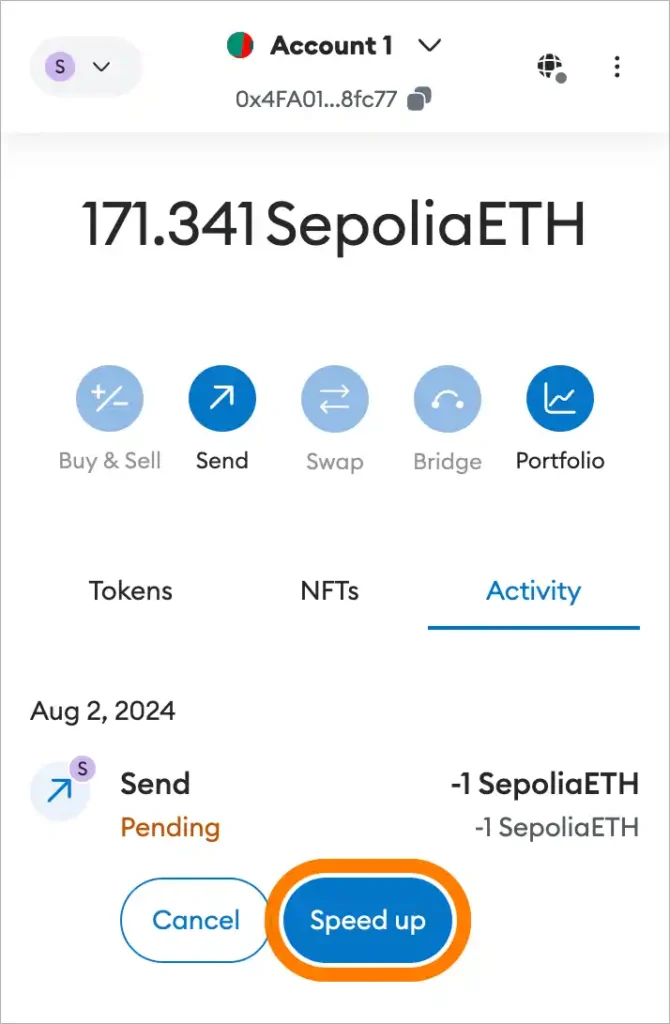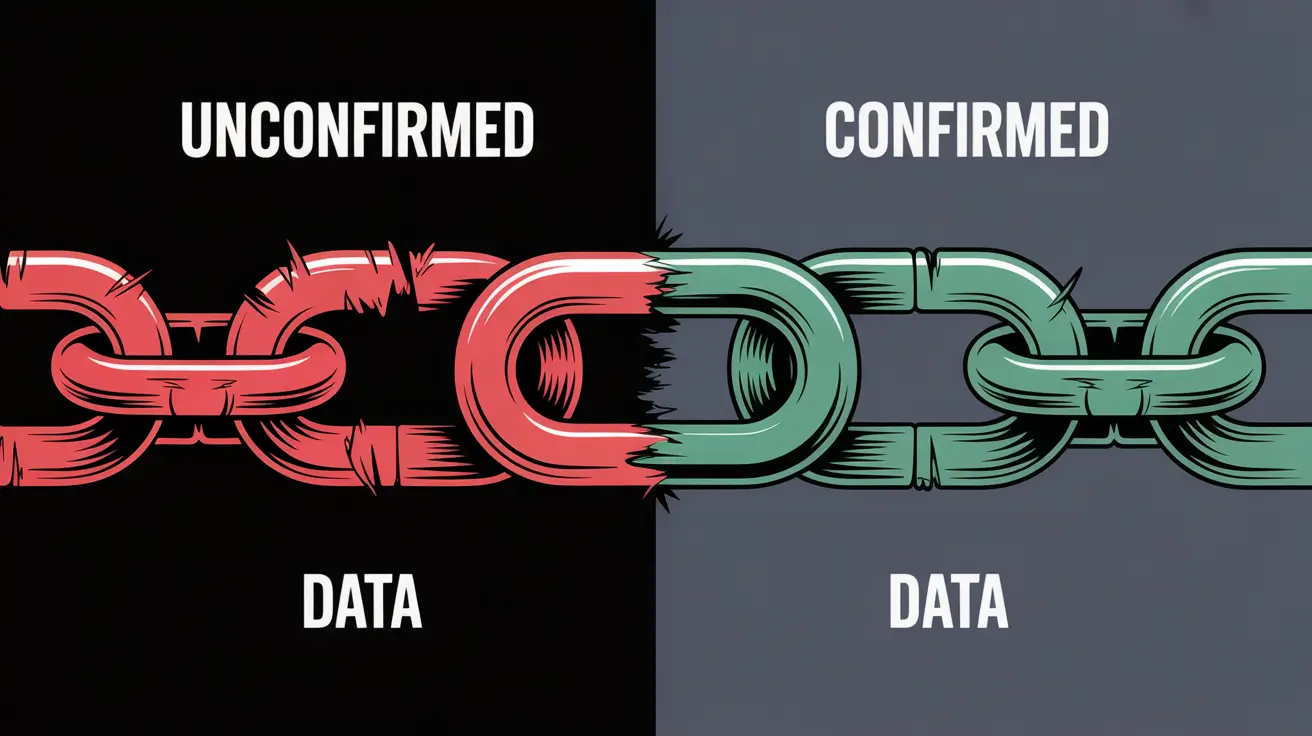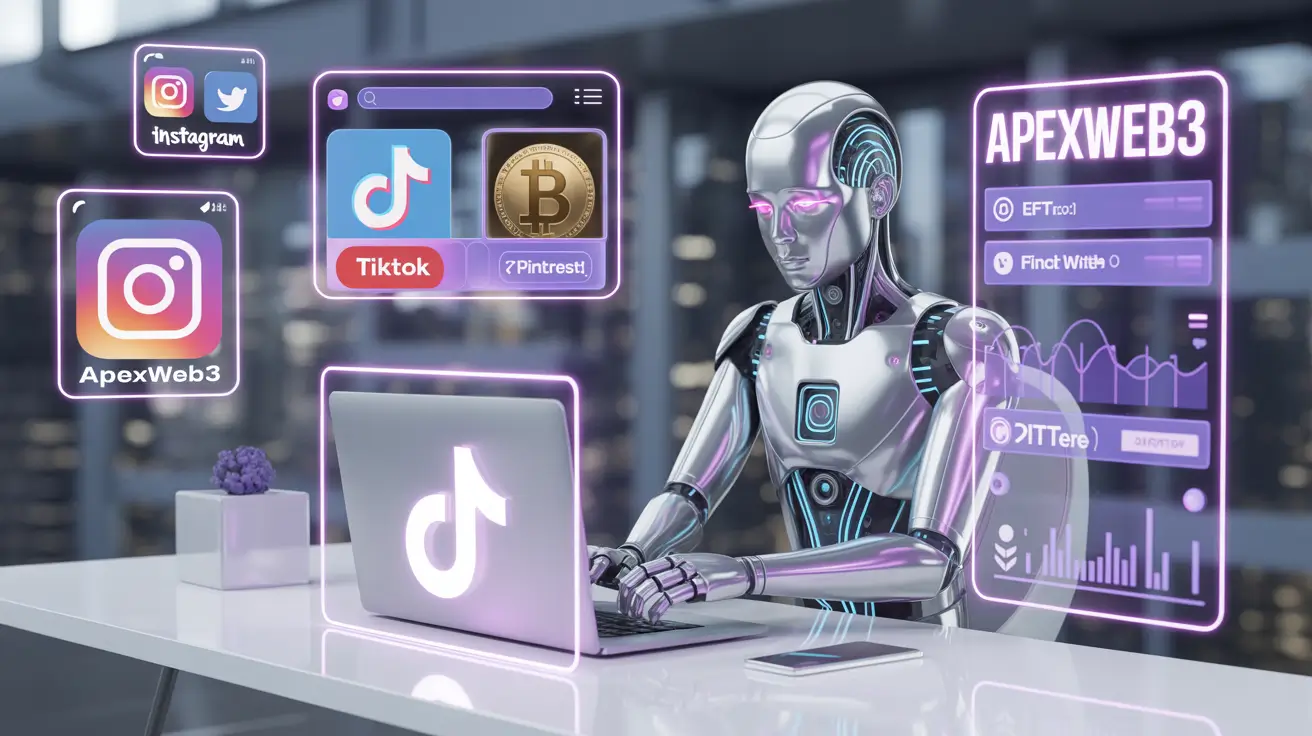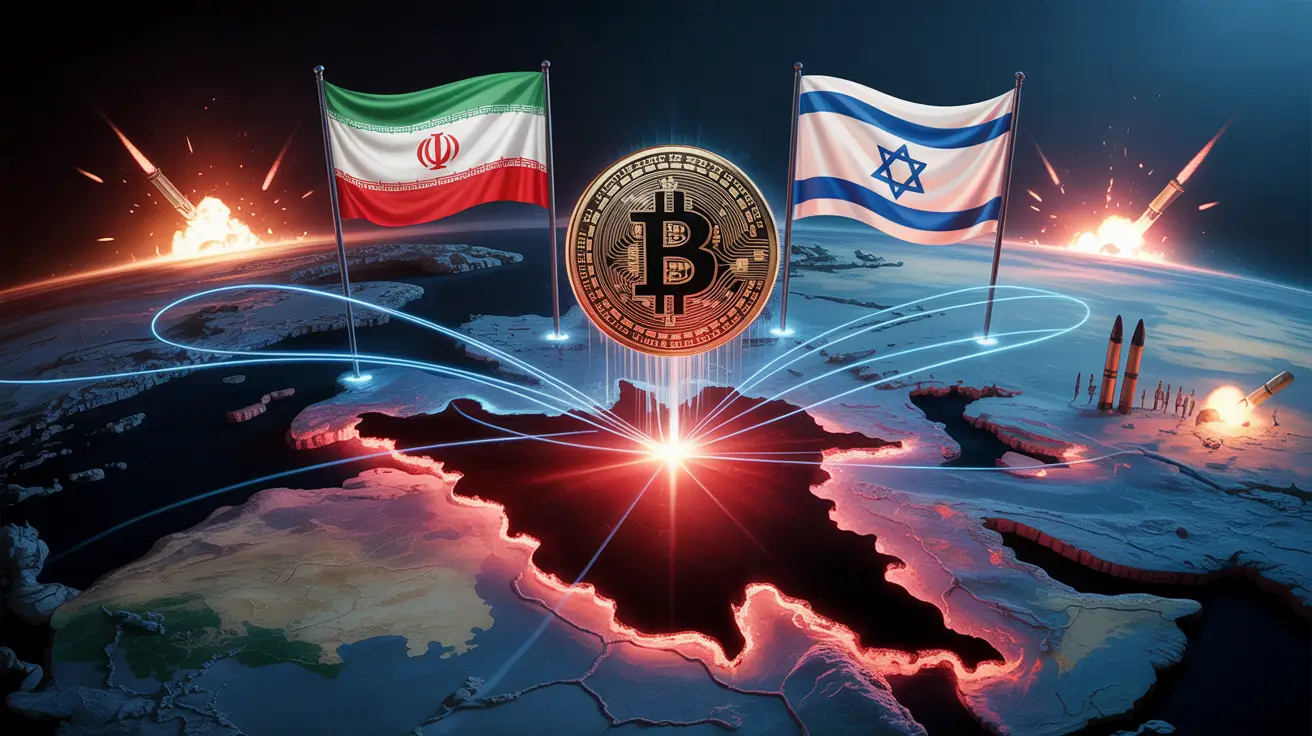Table of Contents
Alright, let’s get real. You aped into a mint, sent some ETH to a friend, or maybe just moved funds between wallets. You hit send, feeling like a crypto god, then… nothing. Just that dreaded “pending” or “unconfirmed” status staring back, mocking your impatience. We’ve all been there, sweating bullets, refreshing the block explorer like a maniac. What gives?
You’ve encountered a blockchain unconfirmed transaction.
Simply put: An unconfirmed transaction is one that you’ve broadcasted to the network, but hasn’t yet been picked up by a miner (on Proof-of-Work chains like Bitcoin) or validator (on Proof-of-Stake chains like Ethereum) and included in a validated block. It’s chilling in the network’s waiting room, known as the mempool, hoping to get picked.
Why should you care? Because understanding this limbo state is crucial for navigating Web3 without losing your mind (or your funds). It separates the seasoned degens from the panic sellers. Knowing the why behind a blockchain unconfirmed transaction gives you control.
Here’s the lowdown we’re dropping today:
- WTF is an Unconfirmed Transaction? The raw basics.
- The TX Lifecycle: From broadcast to ‘wen confirm?’
- Why is My Stuff Stuck? Common culprits.
- Explorer Ops: How to check your transaction status like a pro.
- Fix-It Felix: Strategies for stuck transactions (sometimes).
- Chain Hopping: How unconfirmed states differ (BTC vs. ETH vs. SOL vs. L2s).
- Risk Zone: Why 0-conf is usually a bad idea.
- FAQs: Quick answers to burning questions.
Let’s get it.
Section 1: What Exactly is a Blockchain Unconfirmed Transaction? The Deets
So, we defined it: sent but not settled. Picture the mempool as a hectic, jam-packed line of people waiting to get into an exclusive, high-demand nightclub — the blockchain. Your transaction is your request to get in.
- Unconfirmed: Your request is submitted, you’re in the queue (mempool), but the bouncer (miner/validator) hasn’t let you in yet.
- Confirmed: The bouncer checked your ID (validated the transaction), let you past the velvet rope, and added your name to the official guest list (included you in a block on the chain).
Here’s a quick comparison:
| Feature | Unconfirmed Transaction | Confirmed Transaction |
| Status | Pending, waiting in mempool | Included in a validated block |
| On Chain? | Nope, not officially part of the ledger yet | Yep, permanently recorded |
| Reversible? | Potentially (can be dropped, RBF’d, etc.) | Generally irreversible (after enough confs) |
| Funds Moved? | Not yet accessible by recipient | Accessible after sufficient confirmations |
| Certainty | Low | High (increases with more confirmations) |
The mempool is this wild, dynamic space. It’s where all the hopeful transactions hang out, gossiping about gas fees. Understanding the mempool is key to understanding why your blockchain unconfirmed transaction might be taking its sweet time.
Section 2: The Transaction Lifecycle: Your Crypto’s Journey
Okay, pop quiz: What actually happens when you hit “Send”? It’s not magic (mostly).
- Broadcast: Your wallet shouts your transaction details (amount, recipient, fee offer, nonce) to connected blockchain nodes.
- Mempool Entry: Nodes check the basic validity (like, do you even have the funds?) and toss it into their mempool. Now it’s an unconfirmed transaction crypto is waiting to process.
- Miner/Validator Selection: This is where the action is. Miners/validators scan the mempool. They prioritize transactions offering higher fees (gas on ETH, sats/vB on BTC). Your juicy fee offer gets you noticed faster. They also check the nonce (your account’s transaction counter) to ensure order.
- Block Inclusion means selected transactions get grouped together to form a new block.
- Block Propagation & Consensus: The miner/validator broadcasts this new block. Other nodes check its validity (Proof-of-Work solved? Signatures correct?). If it checks out, they add it to their copy of the chain.
- Confirmation Thresholds: Boom! 1 confirmation. But wait, there’s more. For security (especially against chain reorgs or double spends), most services wait for multiple confirmations (e.g., 6+ for Bitcoin, maybe 12-64 for Ethereum depending on finality).
Section 3: Why the Hell is My Transaction Still Unconfirmed?
Your transaction pending blockchain status got you down? Usually, it’s one of these culprits:
- You Cheapskated on Fees: The #1 reason. When activity spikes — like during NFT launches or market volatility — the network becomes heavily congested. Miners/validators prioritize the highest bidders. If you lowballed your gas (ETH) or sats/vB (BTC), your transaction gets ignored like a default cube NFT.
- Alpha: Don’t guess fees. Use tools like Etherscan Gas Tracker (for ETH) or check mempool visualizers like Mempool.space (for BTC) to see the going rate. You’ll need to match the current network fee, or pay a bit extra if you want faster processing.
- Network Congestion: Sometimes, everyone’s trying to get through the door at once. The mempool swells, and even decent fees might face delays. Patience, young padawan, or higher fees are your options.
- Nonce Nonsense (Mostly ETH): Each transaction from your wallet has a sequential number (nonce). Send nonce #5, then try to send #7 before #5 confirms? Transaction #7 gets stuck until #5 clears. Sending multiple transactions quickly? Make sure your wallet handles nonces correctly or do them one by one.
- Dust Transactions (BTC): Sending tiny amounts of Bitcoin might sometimes get lower priority, though less common now.
- Replace-by-Fee (RBF) Shenanigans: On Bitcoin (if enabled), you or someone else might have broadcasted a replacement transaction with a higher fee, potentially invalidating the first (blockchain unconfirmed transaction). More on this later.
Section 4: Spy Games: How to Check Your Blockchain Transaction Status
Stop sweating and start sleuthing. You need a block explorer. These websites let you peer directly into the blockchain’s soul (and mempool).
- Find Your TxID/Hash: First, grab the Transaction ID (also called Hash or TxHash) from your wallet’s history. It appears as an extended sequence made up of both letters and numbers.
- Pick Your Explorer:
- Ethereum & EVM Chains: Etherscan.io is king. PolygonScan, BscScan for other EVM chains.
- Bitcoin: Blockchain.com Explorer, Mempool.space, Blockstream.info.
- Solana: Solscan.io, Solana Explorer.
- Decode the Status:
- Pending/Unconfirmed: Still waiting in the mempool. You can check how many confirmations the transaction has received — it might still show zero.
- Success/Confirmed: It’s in a block! Explorer will show the block number and increasing confirmations.
- Failed/Reverted: Something went wrong (out of gas, bad contract interaction). Funds (minus gas) usually return.
- Dropped: Might have been kicked out of the mempool (e.g., after a long time with low fees).
Knowing how to check blockchain transaction status is a fundamental Web3 skill. Master it.
Section 5: Operation Un-Stuck: Dealing with Pending Transactions
Okay, your blockchain unconfirmed transaction is stuck. What now? Sometimes you gotta play the game:
- The Zen Approach (Patience): Seriously. If fees were okay and the network is just busy, it might clear eventually. Grab a coffee, touch grass. Check typical transaction confirmation time for the network.
- Replace-by-Fee (RBF – Bitcoin): If you enabled RBF when sending (not all wallets support/default this!), you can broadcast the same transaction but with a higher fee. Miners see the better offer and prioritize that one, effectively replacing the stuck one. Warning: Use with caution. Understand your wallet’s RBF settings.
- Child Pays for Parent (CPFP – Bitcoin): If you control the receiving address of the stuck transaction, you can spend those unconfirmed coins in a new transaction with a very high fee. Miners might be incentivized to confirm the stuck “parent” transaction just to get the fees from the high-fee “child” transaction. Complex, but powerful.
- Speed Up / Cancel (Ethereum): ETH offers a neat trick via nonces.
- Speed Up: Resubmit the exact same transaction (same recipient, amount, data) but with a higher gas fee, using the same nonce as the stuck one. Validators notice the increased fee for a transaction using the same nonce and are likely to give it priority.
- Cancel: Send a transaction of 0 ETH to yourself using the same nonce as the stuck transaction, but with a higher gas fee. This effectively invalidates the original stuck transaction.
- Wallet Features: Many wallets (like MetaMask) have built-in “Speed Up” or “Cancel” buttons that automate this. Use them if available!. Warning: Do this carefully. Messing up nonces can cause more headaches.
- Permanent Failure: If a transaction sits unconfirmed for ages with a hopelessly low fee, nodes might eventually just drop it from their mempools. It’s like it never happened (except maybe in your wallet UI).

Section 6: Not Your Grandpa’s Blockchain: Unconfirmed Transactions Across Chains
How this plays out varies wildly:
- Bitcoin (PoW): Confirmation times target ~10 mins/block. Fees (sat/vB) are king. Needs multiple confirmations (6+ often cited) for strong security. RBF/CPFP are specific strategies here.
- Ethereum (PoS): Faster block times (~12 seconds). Gas fees (Gwei) and EIP-1559 complexity. Needs confirmations for finality (the point it’s highly unlikely to be reversed). Speed Up/Cancel via nonce is common.
- Solana (PoH): Blazing fast. Different state mechanism. “Confirmation” is almost instant, but you look for “finality” which is also very quick. Fee market is different (priority fees). Stuck transactions are less common due to speed, more often outright failures.
- Layer 2s (Optimism, Arbitrum, etc.): Rely on Sequencers to order transactions quickly (near-instant pre-confirmation), then batch them to Layer 1 (Ethereum) for final security. Delays can happen at the L1 settlement step. Understanding the L2’s specific mechanism is key.
Knowing the nuances of the chain you’re using helps manage expectations for your ethereum pending transaction versus a bitcoin unconfirmed transaction.
Section 7: Playing with Fire: The Risk of 0-Conf Transactions
Why do exchanges make you wait for confirmations before crediting your deposit? Because a blockchain unconfirmed transaction (0-conf) is not final.
- Double-Spend Risk: A malicious actor could broadcast a transaction, show it to a merchant as “sent” (0-conf), and then immediately broadcast another transaction spending the same coins with a higher fee (RBF). The second transaction gets confirmed, the first one is invalidated, and the merchant gets rugged.
- Chain Reorganizations: Though rarer, sometimes the blockchain might briefly fork and then resolve, potentially invalidating transactions in the dropped fork. Multiple confirmations drastically reduce this risk.
Rule of Thumb: For anything valuable, wait for confirmations. How many depends on the chain and your risk tolerance, but 0-conf is asking for trouble.
Conclusion: Master the Mempool, Master Your Crypto Destiny
So, the blockchain unconfirmed transaction isn’t some black magic. It’s a normal, albeit sometimes frustrating, part of the decentralized dance. It’s your crypto waiting for its turn on the immutable stage.
Key Takeaways:
- Unconfirmed means the transaction has been broadcast but hasn’t been added to a block yet. It lives in the mempool.
- Fees are crucial: Pay the market rate (or more) to avoid delays.
- Network congestion happens. Be patient or pay up.
- Learn to use block explorers – they are your window into the chain.
- Solutions exist for stuck transactions (RBF, CPFP, Speed Up/Cancel), but use them wisely.
- NEVER trust 0-confirmation transactions for significant value.
Understanding the lifecycle and potential pitfalls of an unconfirmed transaction crypto journey empowers you. You can diagnose delays, make informed decisions about fees, and potentially un-stick transactions yourself. Now go forth and transact with slightly less anxiety.
Got a horror story about a stuck transaction? Or a pro tip for speeding things up? Drop it in the comments below or join the ApexWeb3 Discord!
Frequently Asked Questions (FAQ)
What is the difference between pending and unconfirmed?
They generally mean the same thing – the transaction has been broadcast but isn’t confirmed in a block yet. “Pending” is often used in wallet UIs, while “unconfirmed” is the technical state.
Why is my blockchain transaction unconfirmed?
Most likely reasons: Transaction fee was too low for current network conditions, the network is heavily congested, or there’s a nonce issue (especially on Ethereum).
How long do unconfirmed transactions take?
Highly variable! Depends on the blockchain (BTC ~10min blocks, ETH ~12s blocks), network congestion, and the fee you paid. Can be seconds, minutes, hours, or (if fee is way too low) potentially never.
Can an unconfirmed transaction be cancelled?
In some cases on Ethereum, you can cancel a pending transaction by sending a 0 ETH transfer to your address, using the same nonce and a higher gas fee. On Bitcoin, RBF effectively replaces/cancels the original if enabled. Not all transactions are cancellable.
What happens if a transaction is never confirmed?
If a transaction sits in the mempool for too long with a fee far below market rate, nodes may eventually drop it (forget about it). The funds never left your wallet in that case. It’s like the transaction attempt vanished.
Is 0 confirmations safe?
Usually not recommended, especially when receiving funds. There’s a high risk the transaction could be double-spent, dropped, or replaced. It’s safer to wait for several confirmations before accepting any significant transfer.
(Disclaimer: This is not financial advice. Blockchain transactions carry risks. Ensure you understand the tools and processes before attempting advanced actions like RBF or nonce manipulation.)





